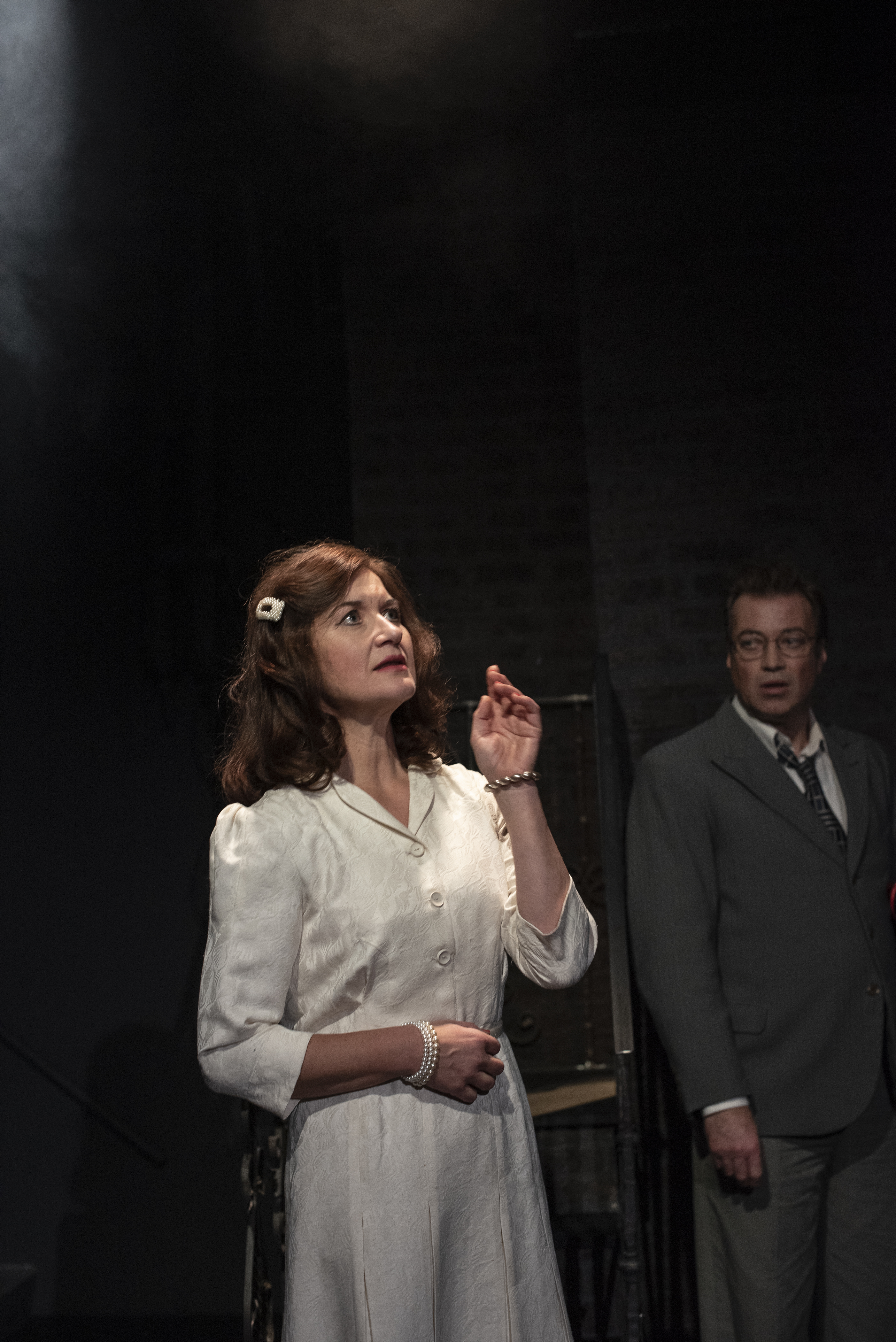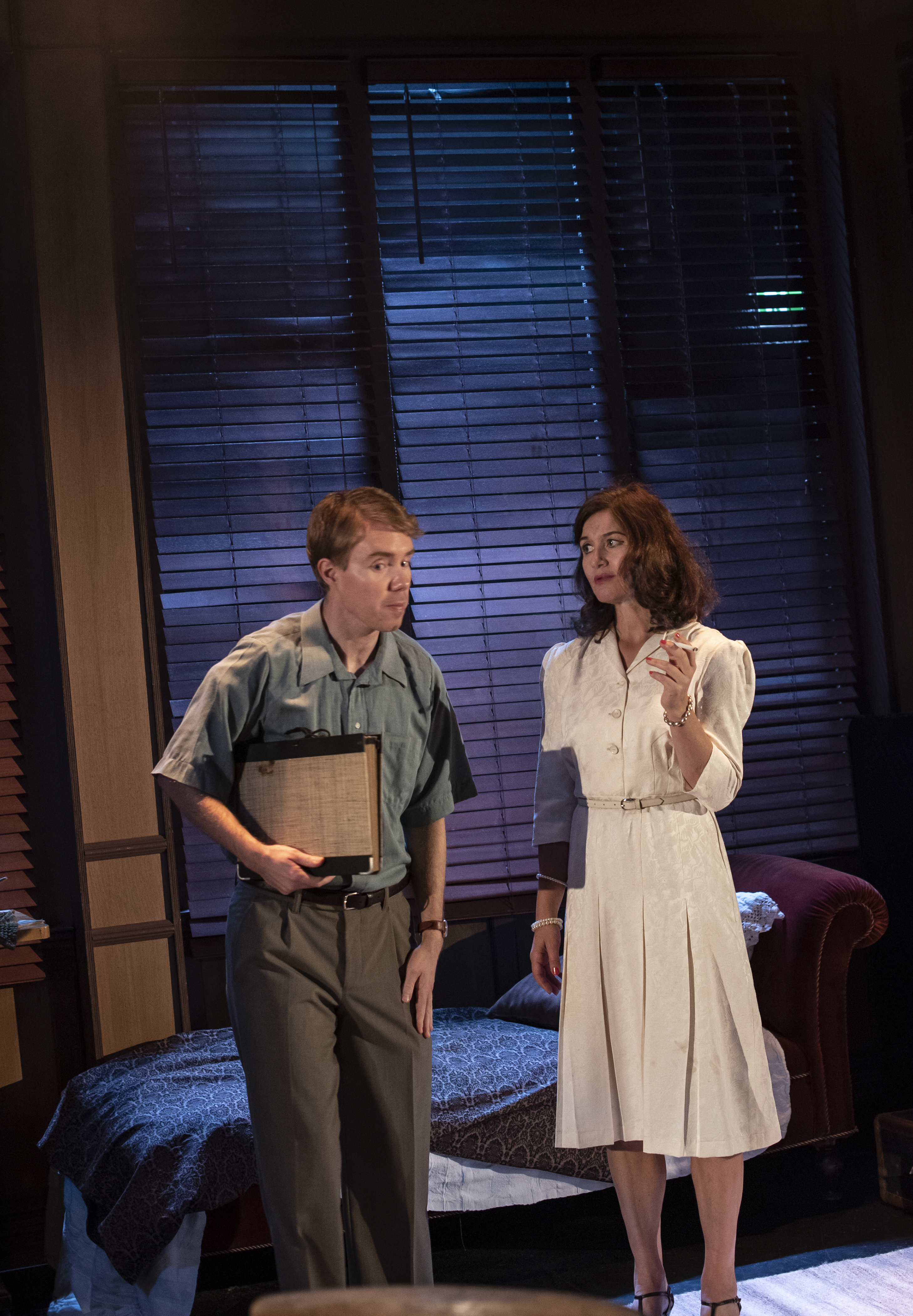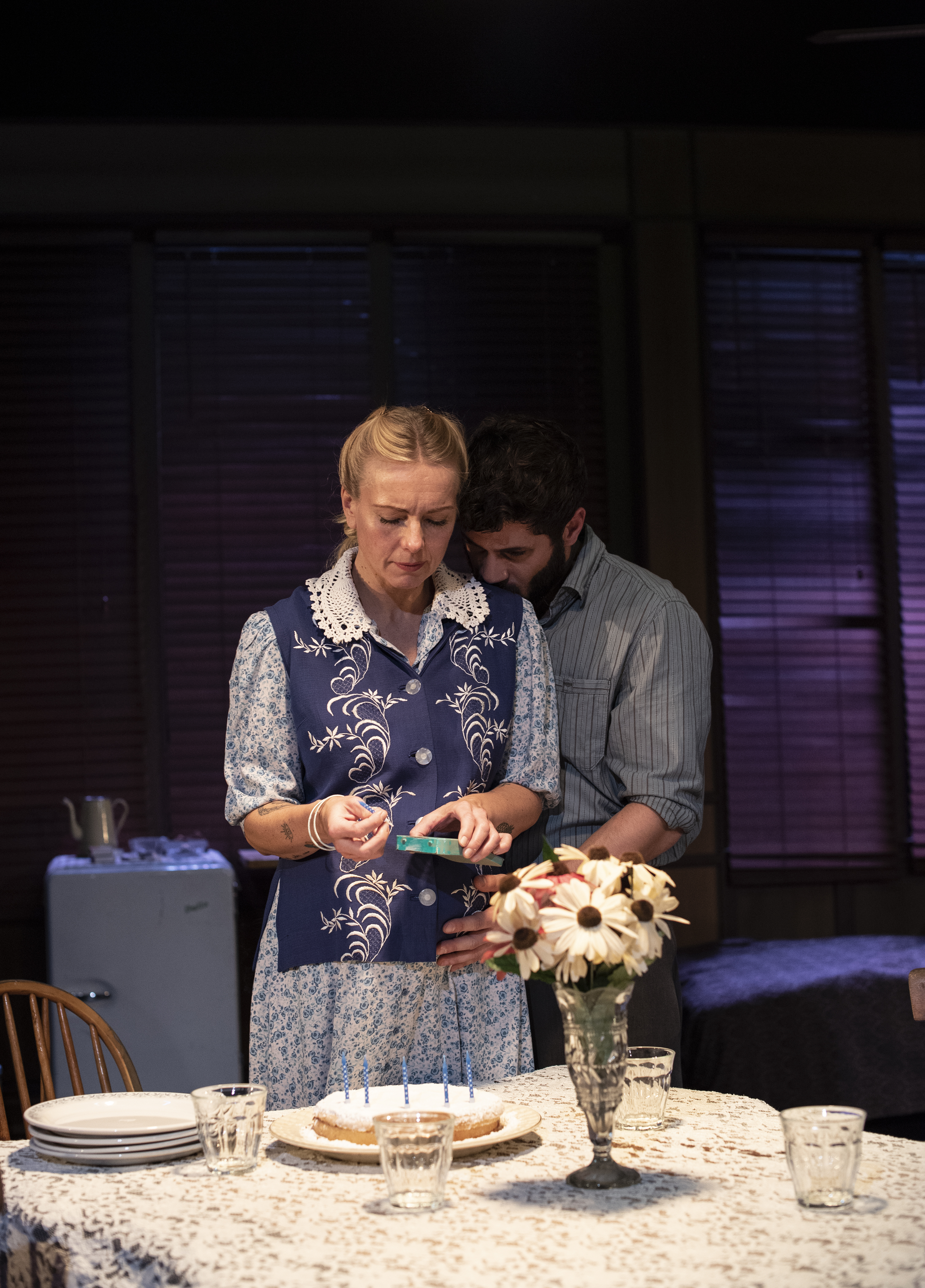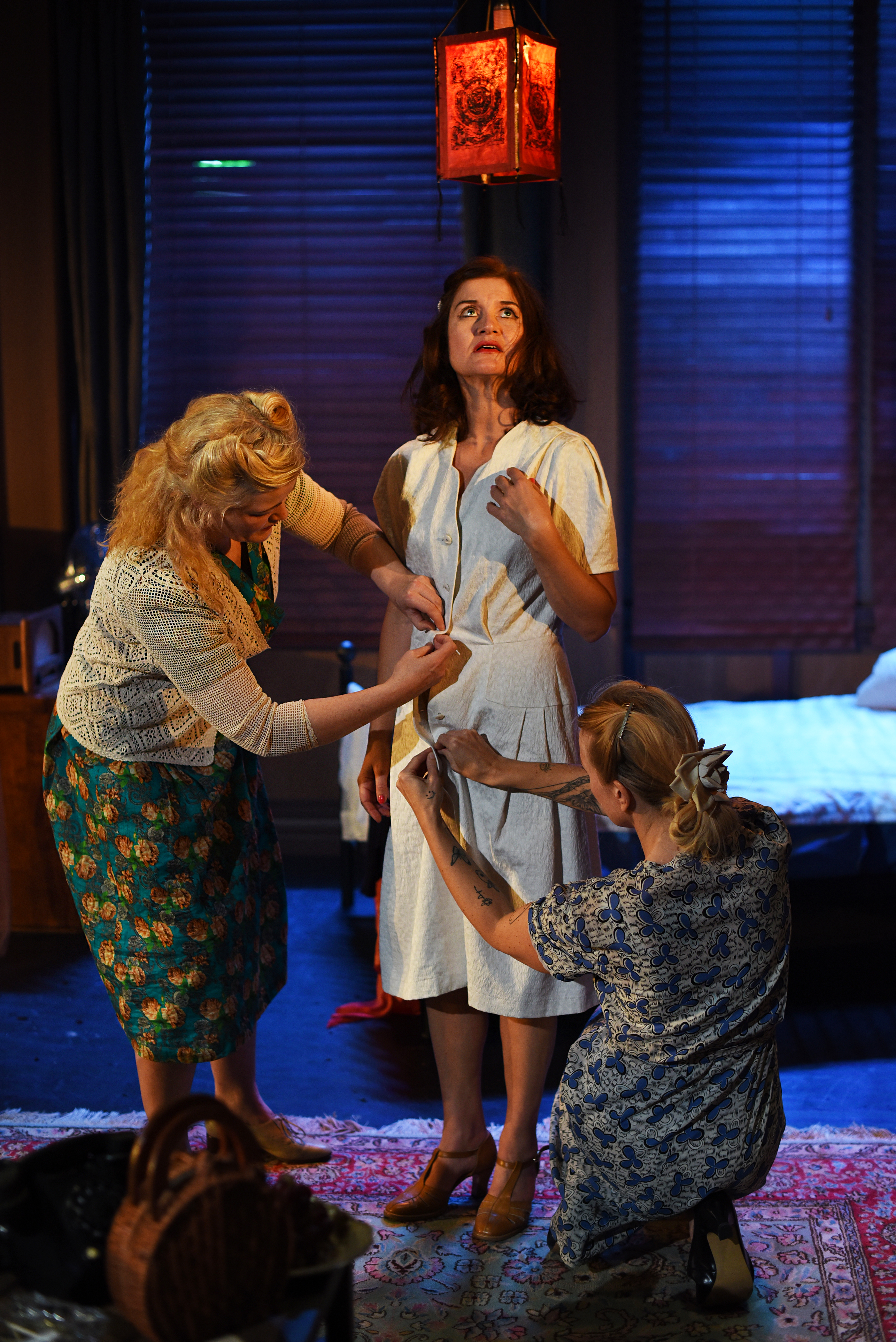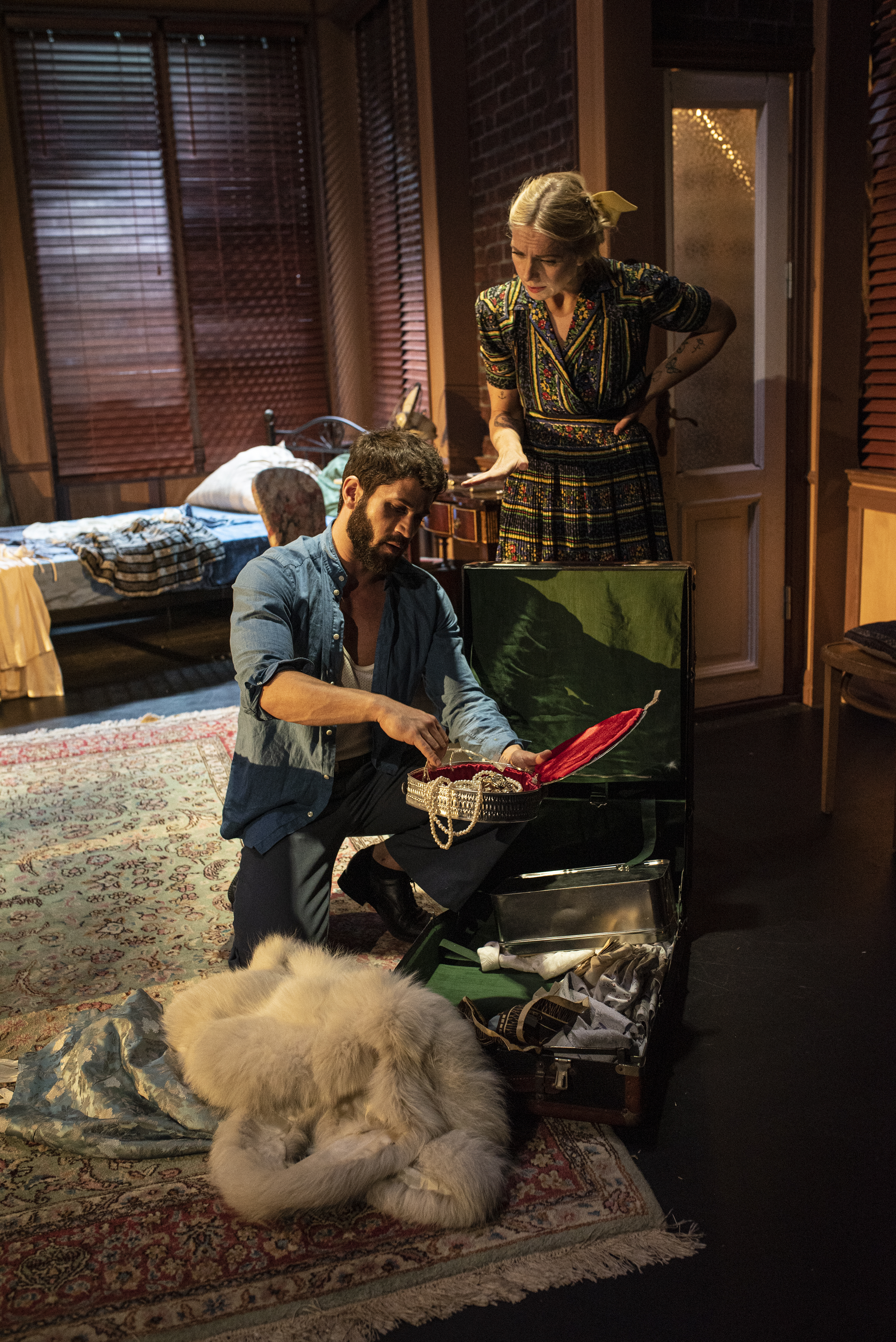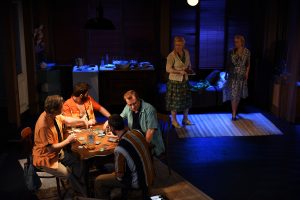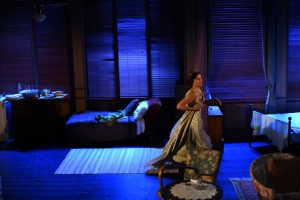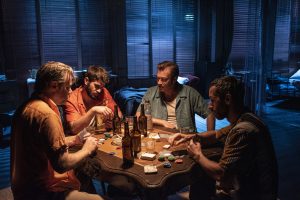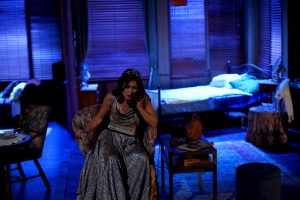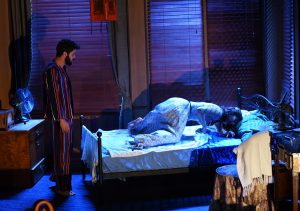
A STREETCAR NAMED DESIRE
A Streetcar Named Desire premiered at Grusomhetens Teater (The Theatre of Cruelty) on the 25th of October 2019.
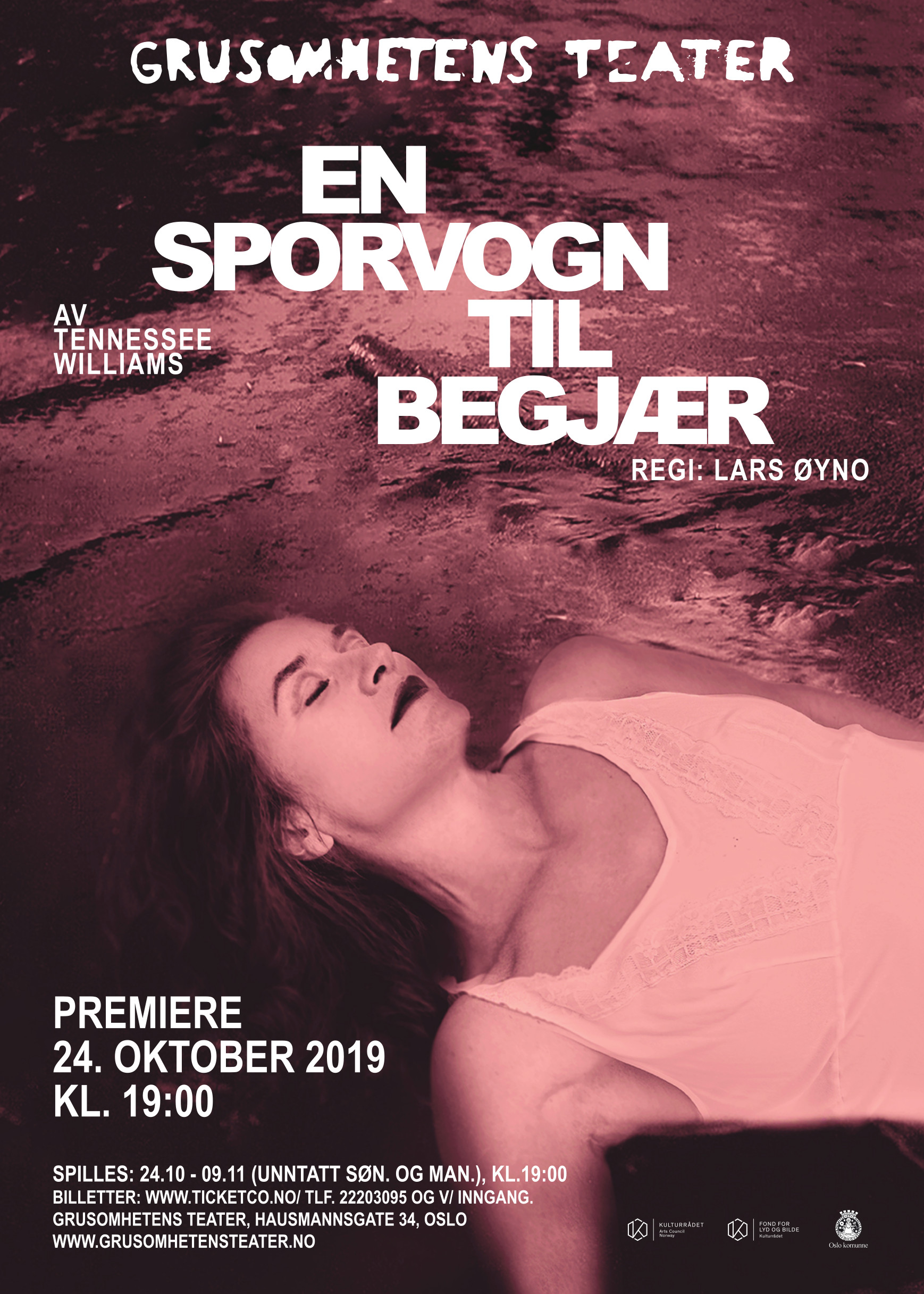
“I don’t want realism. I want magic.”
– Blanche
A Streetcar Named Desire, written in 1947 by Tennessee Williams, is a well-known modern drama, frequently performed on theatre stages worldwide. The film adaptation from 1951 is remembered, among other things, for the excellent performances by the lead actors Vivien Leigh and Marlon Brando.
The story takes place in a run-down New Orleans apartment shortly after World War II. Former teacher Blanche Dubois flees after the forced sale of the family estate and from a dark past to her sister Stella and her husband Stanley; soon an intense psychological drama unfolds.
Some need poetry to live, and wish to see it in their surroundings. The name Blanche Dubois means “white forest,” and as she herself illustrates it in the play: “like a fruit orchard in spring,” but the desire of the innocent constitutes a paradox, an irrationality, a threat in modern society…
Director’s Notes
72 years have passed since Tennessee Williams wrote “A Streetcar Named Desire”. The relevance should not be overlooked. What exactly is a worthy drama? It is a work that has achieved the master stroke of producing a soulful imprint. I believe the audience should narrate themselves into this theatrical classic, and therefore, I do not feel the need to elaborate or put personal conceptualizations into play.
A program should provide concise information to the audience before they enter the auditorium; it should state the year the play was created, who is involved, and perhaps some biographical data about the author. Regarding the latter, I suggest referring to the internet, where one can read about Tennessee Williams and “A Streetcar Named Desire.” Nevertheless, the story unfolds in New Orleans a few years after World War II, a city characterised by charming decay, jazz, heat, black and white, side by side.
The relevance of the play can be justified by pointing to its frequent performances around the world, not to mention in Norway, where we’ve had three or four productions so far this year. That being said, I believe the play addresses the eternal conflict between poetry and society. Translated into a more modern theme – nature and civilisation.
Lars Øyno – October ‘19
Reviews & Commentary
“The tragic tale of the Southern belle Blanche Dubois, worn down in a life struggle between primitive impulses and purity, has been a showcase for many a diva. From the very beginning, Hanne Dieserud has grasped the inner pain of the character, and without a single exaggeration, she unfolds the behaviour of this ostentatious and neurotically articulate woman. We understand that she can get on people’s nerves, but still we sympathise with her throughout. The ensemble around her is perfect, with characters that confirm the essence of the play down to the smallest detail. A triumph!”
Bent Kvalvik, Dag og Tid
“Hanne Dieserud continues to portray refined drunks with precision, one year after her powerful performance in ‘Who’s Afraid of Virginia Woolf.’ In ‘A Streetcar Named Desire,’ she does it with so much pain that we almost reach for the bottle with her.”
“Weak ragtime and jazz music from the radio, ceiling fans, liquor bottles, dark blinds – everything gives a discreet film noir touch to the Grusomhetens Teater stage. Set designer John-Kristian Alsaker and propmaker Antti Bjørn have created a realistic rendering of a shabby New Orleans apartment from the late 1940s.”
“Together with Gjøril Bjercke Sæther, Antti Bjørn has also been responsible for costume design. Although clothes and physical appearance are important for several characters in the cast, it is refreshing that Sæther and Bjørn have not succumbed to the temptation of extravagant 1940s aesthetics. The clothes seem natural on all the actors, and when the two female lead actresses do their hair and makeup, it feels everyday – as if Dieserud and Sponnich are styling their hair with round brushes, bows, and hairpins in their daily lives.”
“And even though herbal cigarettes are clearly being smoked on stage, the air soon feels as thick as in a Norwegian café before 1994 – not to mention post-war USA.”
Hedda Fredøy, Norsk Shakespeare Tidsskrift
“Hanne Dieserud, however, is set in her role. She applies the entire repertoire of nuance to Blanche, dynamically shifting between this troubled woman’s various mental states, accompanied by a sorrowful, disillusioned humour. The interactions with Nina Eileen Sponnich, as the sister “Stella”, and Gisle Hass as “Mitch”– the sensitive exception to Stanley’s poker gang, also works well. The soundwork. The sound, designed by Miguel Steinsland, who also plays one of Kowalski’s drinking buddies, is a remarkable component in itself. The sound of passing trains, music from the streets and near-by clubs, as well as many other less prominent elements, covers the entire spectrum of sound, from the subtly atmospheric to the brutally intrusive. A distinct feature, which I can’t find referenced in the original manuscript, is a musical leitmotif in the form of the Polish workers’ song ‘Warszawianka’, which appears in Blanche’s troubled mind and continuously reminds her of Stanley’s existence.”
Chris Erichsen, Scenekunst.no
“Both ‘Who’s Afraid of Virginia Woolf’ and ‘A Streetcar Named Desire’ are powerful character-driven dramas which never venture outside of the room where the action unfolds. The human being is central. The animalistic human, the vulnerable human, and the human who deceives themselves. Facades are exposed, illusions crumble, and hell itself breaks loose. Lars Øyno has cracked a code here. He’s committed to the original material, allowing text and performance to drive the action without any forced modernisations or lofty attempts at timelessness. We’re in a sweltering 1940s New Orleans, but that doesn’t make the story of Blanche DuBois and the Kowalski family any less compelling. On the outside, it may appear old-fashioned, but the inner workings of the human psyche are something we’ll always relate to – regardless of which era we’re in. When directing, acting, set, lighting and sound are all spot-on, the result is a fantastic theatre which should set the standard for even the largest institutional stages.”
Stine Sørensen, teaterungdom.no
“Director Lars Øyno has dedicated his career to physical theatre and an existence on the sidelines of the traditional theatre scene. Surprisingly, he staged Edward Albee’s ‘Who’s Afraid of Virginia Woolf’ last year. Once again succeeding in creating a physiologically realistic piece, it is his ability to create a strong, sensory universe that underpins it. At Grusomhetens Teater, set designer John-Kristian Alskaker immediately evokes the simmering yet claustrophobic atmosphere.”
“With Øyno’s eye for constant shifts between characters – between dominance and subordination, pretence and outbursts – we are swept into a story that isn’t really about class and assets. But how we manage our dignity – perhaps the most vulnerable asset of all.”
Kjersti Juul, Vårt Land
Many thanks to:
The National Theatre for use of their workshops
Ragnar for assembling the set.
Whiskeytobakk.com (Morten Christensen)
Thor Eriksen
Performing Rights Agency: NORDISKA APS – KØBENHAVN
Supported by: Kulturrådet, Fond for Lyd og Bilde and Oslo Kommune.
Blanche Dubois
Hanne Dieserud
Stella Kowalski
Nina Eileen Sponnich
Stanley Kowalski
Jade Francis Haj
Harld Mitchell (Mitch)
Gisle Hass
Eunice Hubbel
Henriette Blakstad
Steve Hubbel
Miguel E.D. Steinsland
Pablo Gonzales
Cristo R. Borrachero
Doctor
Lars Brunberg
Mexican woman / Nurse
Claudia Lucacel
Young Man
Carl Anders Hollender
------------------
Director
Lars Øyno
Set Designer
John-Kristian Alsaker
Lighting Designer
Rolf Christian Egseth
Costume Designer
Antti Bjørn, Gjøril Bjercke Sæther
Prop Designer
Antti Bjørn
Makeup Artist
Trude Sneve
Sound Designer
Miguel E.D. Steinsland
Producer
Claudia Lucacel
------------------
Assistant Director
Claudia Lucacel
Lighting Technician
Jan Skomakerstuen
Sound Technician
Varun Krishnan
Technician
Thomas Sanne
Prompter
Anne-Marie Adriansen
Photo/Videographer
Claudia Lucacel
Graphic Design
Moro Design
Web Design
Jonas Ulleland
Production Year
2019


